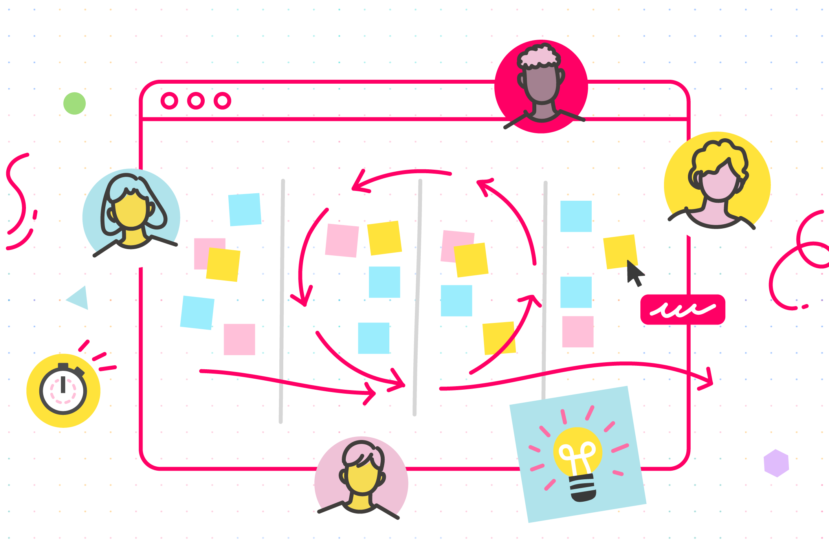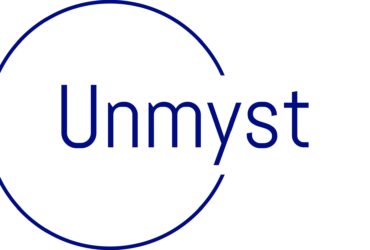It isn’t necessarily easy to create a new product or service, and it is even more difficult to see it flourish in the market. Good products captivate target audiences by solving customer demands while also delivering commercial value that sets them apart from their competition, and Scrum Master helps us do so. So, before we start, let us briefly understand what a Scrum Master is.
A Basic Foundation of Scrum Mastery
Imagine yourself as a part of a team that is tasked with developing a new webpage; for example, an E-Commerce site; and you have a mountain of work ahead of you; what one would usually do to get such work done would be to initiate a plan, make a timetable, find a project administrator, hold continuous calls as well as meetings, and eventually just hope that you don’t stumble before you reach the finish line; but what you end up experiencing is that everything is additionally expensive than what you would usually expect it to be, and what happens, in the end, is that you find yourself stressing about the deadline and wish that the results would be even better; these difficulties are resolved with the help of a Scrum master.
With Scrum Master, we write fewer plans and can do so much more in short cycles known as Sprints. We don’t work on discrete islands but can work as a single devoted bunch, deliver functioning products and receive constant feedback. Scrum Master is a supple way of working in a fast-paced world and is commonly used while executing IT projects. Scrum Master is also used to develop new products, and compose budgets and yearly reports.
The 21 Most Efficient Scrum Practices
Teamwork and Meetings:
1. Set up workshops with key stakeholders to develop a product backlog and vision:
One of the most significant Scrum assets is the product backlog. It essentially documents the product vision of the stakeholders. Filling up the product backlog with stakeholders is a smart approach. This could arise even before a contract is signed. Through product backlog conversations, the team gets to know a stakeholder better as they align their visions and come to an agreement on the future product.
2. Scrum meetings must include all stakeholders:
Some of the Scrum meetings arranged by the team should include stakeholders along with the product owners. This gives stakeholders a first-hand look at how discussions are run and how the team collaborates on the inside. During sprint reviews or demos, for example, stakeholders can evaluate sprint planning processes and hear group discussions regarding work results. The team might get useful feedback on their deliverables and have active participation.
3. Existing teams should not be split or re-grouped:
When a group has completed past projects together, they will already have developed a relationship and an understanding of each other’s skills. Instead of disrupting the workflow, it is preferable to keep high-performing teams together. Of course, this isn’t always achievable, as some projects will require regrouping because of varying skill sets.
4. Don’t overlook the importance of teamwork and teambuilding:
Team-building exercises are extremely valuable. However, if you need to construct a team from the ground up for a new project, their worth skyrockets. The importance of informal hangouts and Scrum games does not mean that team building is over. Effective team-building strategies emphasize strictly professional tasks, such as exchanging skills and embracing engineering procedures that enhance collaboration.
5. Stand-ups are required:
Everyday meetings are often referred to as “stand-up” meetings since everyone is expected to participate while standing. The main goal of this strategy is to keep the meeting brief. A meeting can last for hours when everyone is seated comfortably and conversing. Consequently, such sessions sometimes last longer than necessary. When everyone stands and speaks in a stand-up meeting, it takes less time.
6. When working with distant teams, establish communication guidelines:
Whenever teams are dispersed throughout the globe or work-from-home policies are in place, it’s critical to establish remote communication standards. On calls, important details may be missed, so essential alerts should be captured and tagged in a common tracker. Notification messages to all parties involved are simple to set up with collaboration software.
Organizing and Estimation:
7. Stakeholders must be kept informed during the estimation process:
In the presence of a stakeholder, evaluate the product backlog items. Firstly, the team can ask all of the necessary questions directly. Furthermore, the consumer observes all discussions and can tell when the estimate is reasonable and when it isn’t. This will help build trust and reduce the likelihood of future disagreements or overestimates.
8. A new sprint should be planned only when the product backlog contains enough items:
It’s important to prepare for the next sprint only when the product backlog contains enough items for the following two sprints. Scope creep occurs when the project’s scope grows uncontrollably as a result of the backlog’s poorly specified scope over the next several sprints.
9. Determine the main goal for each sprint:
It may become difficult to prioritize the items in the backlog unless the sprint goals are explicitly defined. To determine the goals that the team will achieve throughout each sprint, the team and customers must synchronize their objectives. The Product Owner, in collaboration with the team, will select the tasks that must be accomplished within the sprint based on the goals.
10. Make better estimates by using Planning Poker:
Planning Poker is a tried-and-true estimating and planning strategy. Accurate and manageable estimates can be obtained using this easy procedure.
11. Set aside time each day to mitigate risks:
Several dangers can arise as the race progresses. For example, someone from a team, for example, may be absent without warning, and thus, planning six-hour days and leaving an additional two hours each day for risk reduction is a solid technique for dealing with absences. Another option is to anticipate the absence of a certain percentage of the team.
12. Sprint timings should not be shortened or stretched:
The sprint time limit should not be extended or shortened, as the team may be motivated to ignore specified deadlines in the hope that they will be reset. Even if a topic is unexpectedly large and cannot be completed in a sprint, the sprint should stop at the end of the agreed-upon period, and the unfinished items should be placed at the top of the backlog for the following sprint. Simultaneously, if the stories are finished ahead of schedule in a sprint, some lesser tales could be added to keep the schedules on track.
Managing Backlogs:
13. Keep the product and sprint backlogs separate at all times:
In most circumstances, a sprint backlog is frozen, whereas a product backlog is regularly updated. Maintaining these documents separate will allow you to plan, estimate, and forecast your sprints more efficiently. For example, you may measure your team’s velocity and generate more precise estimations in the future by comparing spring backlogs.
14. Use task prioritizing approaches in the product backlog:
The Moscow, Business Value Approach, Kano Model, Walking Skeleton, and other task prioritization strategies can be used to prioritize work in the product backlog. Backlog tasks can be listed in simple excel documents along with their status and priority. Always opt for the method that makes the most sense for your group and that everyone understands.
15. Assign distinct identifiers to individual items:
Assign an ID to each user narrative to eliminate ambiguity and ensure that everyone on the team is on the same page. Two user stories may sound identical but are not, and team members may believe they are discussing a distinct narrative.
16. Visualize dependencies to identify bottlenecks:
Dependencies might be operational or technical. The workflow is stabilized and improved, and bottlenecks are identified and removed.
17. Employ a Scrum board:
Most people perform better when they are guided by visual assistance. In this case, a Scrum board is a beneficial tool. This board is a visual depiction of user stories and projects that have not yet begun, are in process, or have been completed. It can also highlight obstacles, validation requirements, and product owner reviews.
Predicting and tracking:
18. Show sprint burndown graphs:
Burndown charts, which visually display the sprint’s progress, are an excellent visualization tool for detecting and resolving issues as soon as they arise. The number of completed tasks per day is compared to the number of tasks planned for the day, indicating whether or not progress is on track.
19. Utilize release burndown charts:
A release burndown chart, like a sprint burndown chart, can be used to estimate how many sprints are required to complete a project on time and whether the team needs to adjust the expected timeline. The x-axis depicts sprints, while the y-axis depicts the number of tales that must be produced before the final release. If the initial product backlog was upgraded with new stories throughout development, release burndown is critical. The release date will undoubtedly be affected by these upgrades.
20. Employ velocity measurements:
The progress of work can be monitored against original projections and utilized to better predict team commitments and results by estimating the velocity. If the velocity fluctuates a lot, the sprint planning needs to be re-evaluated and made more trustworthy.
21. Make use of good collaborative software:
While Excel spreadsheets may be used for all of these measurements, it’s preferable to use adaptable tools designed expressly for Scrum and, subsequently, Agile teams.
Conclusion
To conclude, Scrum’s best practices have been experimentally proven to help teams achieve their goals. Scrum Masters, on the other hand, must be aware of the rationale behind each of the rituals and be willing to change things up when the scenario calls for it. At the end of the day, Agile is about making processes work for people rather than for processes.





